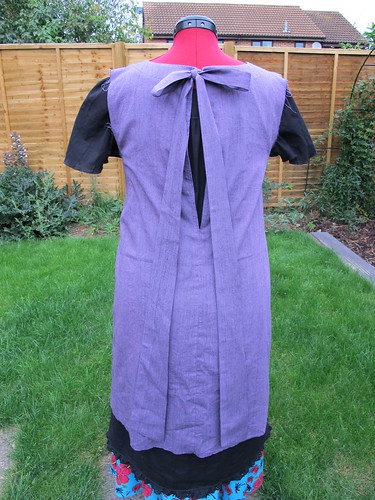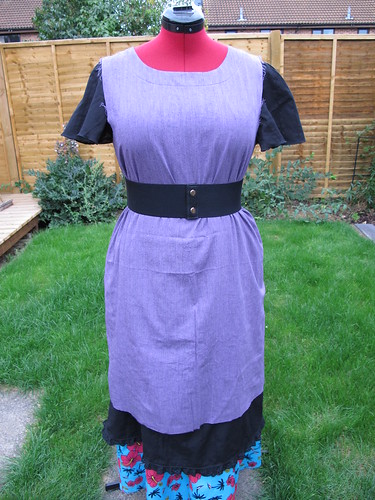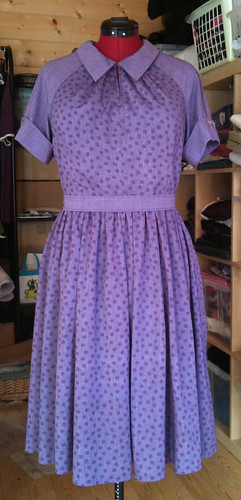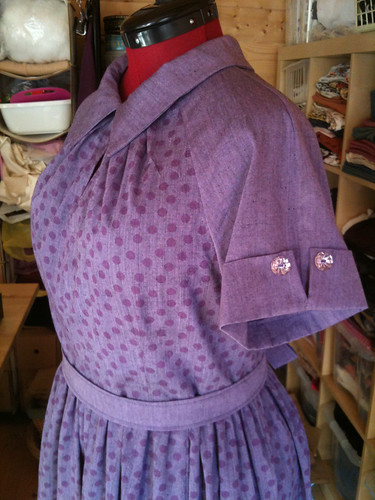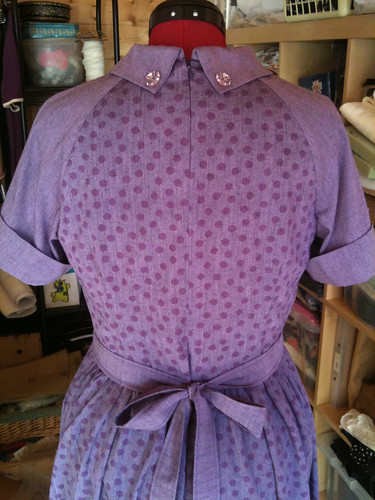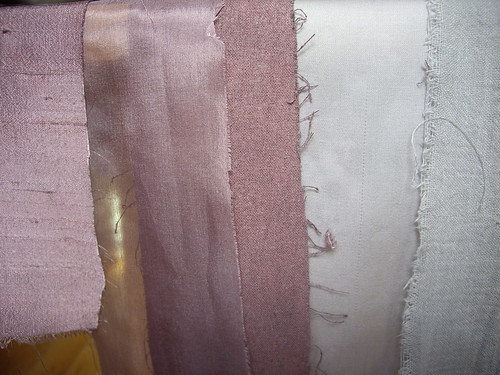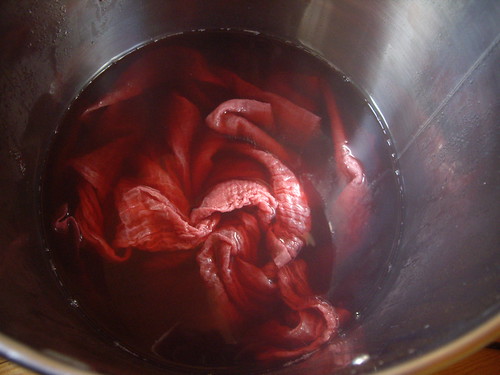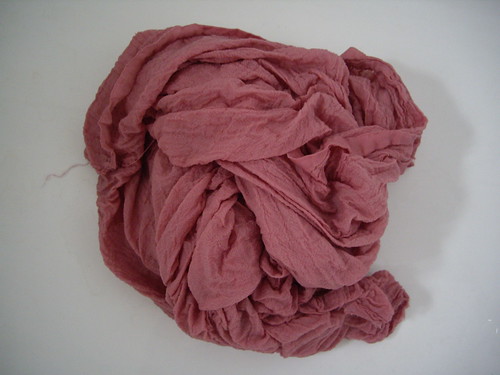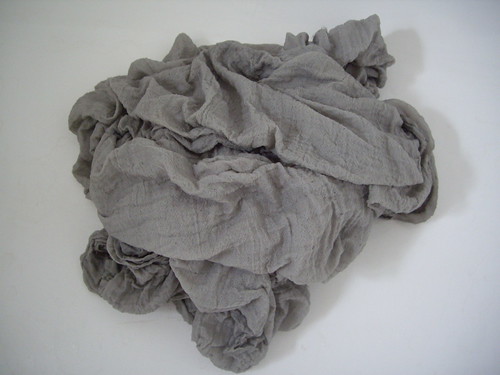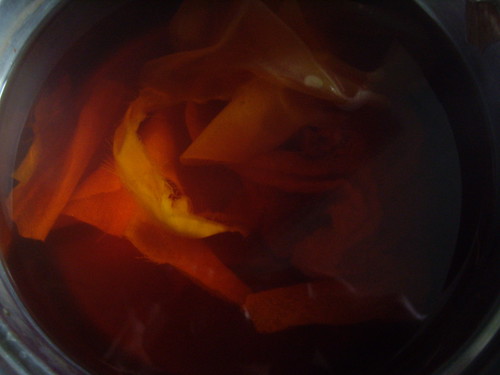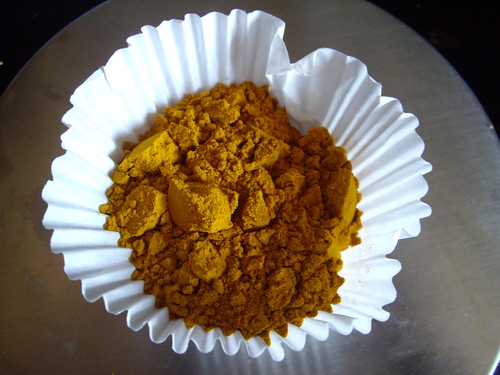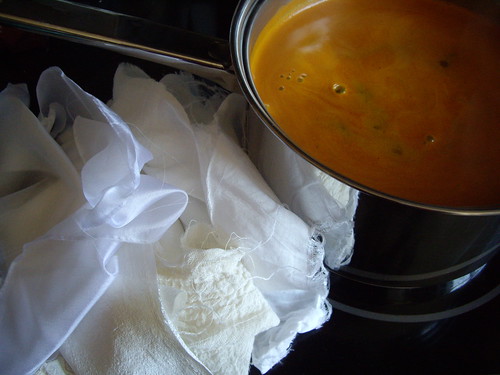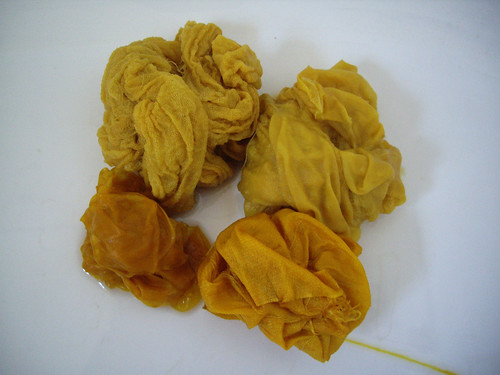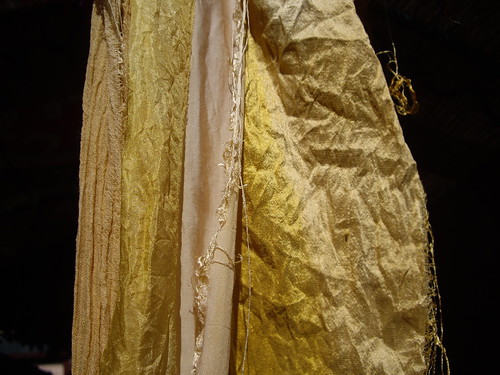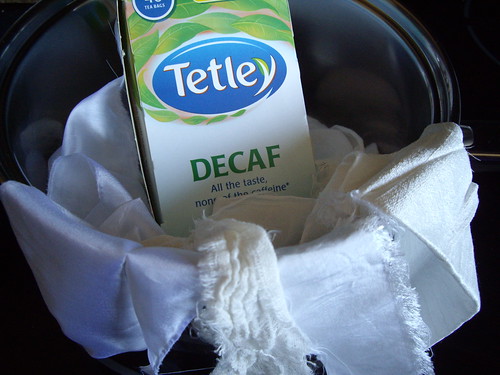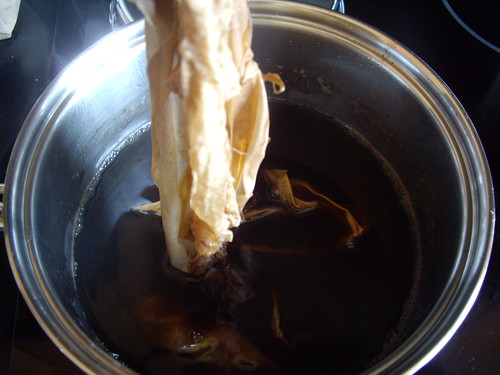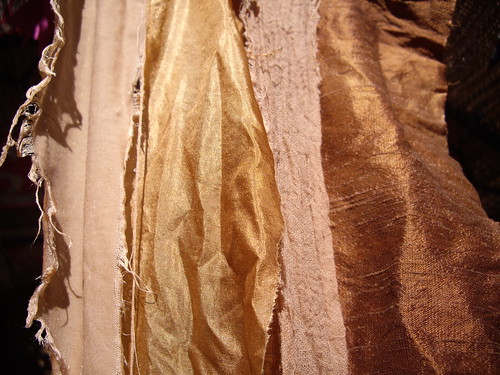This is the back view of the prototype version of my 40th Birthday Dress. So far, I’m very glad that I made a prototype, and didn’t take the scissors straight to the gorgeous shot silk dupion that I’ve got waiting!
The style of the dress is exactly spot on. The open back designed to give a glimpse of the layer underneath, the ridiculous bow inspired by a 1971 Style pattern (more on this later), and a high round neck at the front, deliberately kept very plain, to show off a big necklace or a pretty scarf.
Unfortunately, I forgot something important. (No, not the ironing. Shush.) You see those drag lines at the sides, underneath the bust? I forgot the all important part where fabric is flat but bodies are curved, and I didn’t leave quite enough breathing room at the top. Fortunately my dress form is somewhat more generously endowed than I am, so the dress does fit. But it is a bit tight, so I’ll need to re-draft the front pattern piece before I make another. (I blame the fact that my pattern drafting books are already packed for the move, so I had to make the pattern up as I went along.)
I’ve been adding a lot of “Lagenlook” inspired outfits to Pinterest lately (you can see the board here), and the point is to wear a lot of loose layers, often with plenty of frills and asymmetry thrown in for good measure. The basic silhouette of a Lagenlook outfit is fundamentally triangular. As I am also fundamentally triangular, this seems like a great look for me!
The annoying thing is, I’m so utterly conditioned to the “right” shape for a woman being an hourglass, or at least having some semblance of waist definition, that my immediate thought on adding this belt to the dress form was, “that’s better”.
Except that it’s not better. It’s not better at all. It pretty much guarantees that I’ll have indigestion after an hour, be uncomfortable all day, and generally be distracted by my clothes instead of focussing on whatever it is I’m supposed to be doing. None of which, however you look at it, can possibly be defined as “better”.
I think what I need to do now is take the belt away, make the next version of the dress much more wide and floaty, and try to step away from any and all forms of media that try to tell me that my body shape is fundamentally wrong.
(And work out how best to add the most ENORMOUS pockets to the front of the dress. Obviously.)

